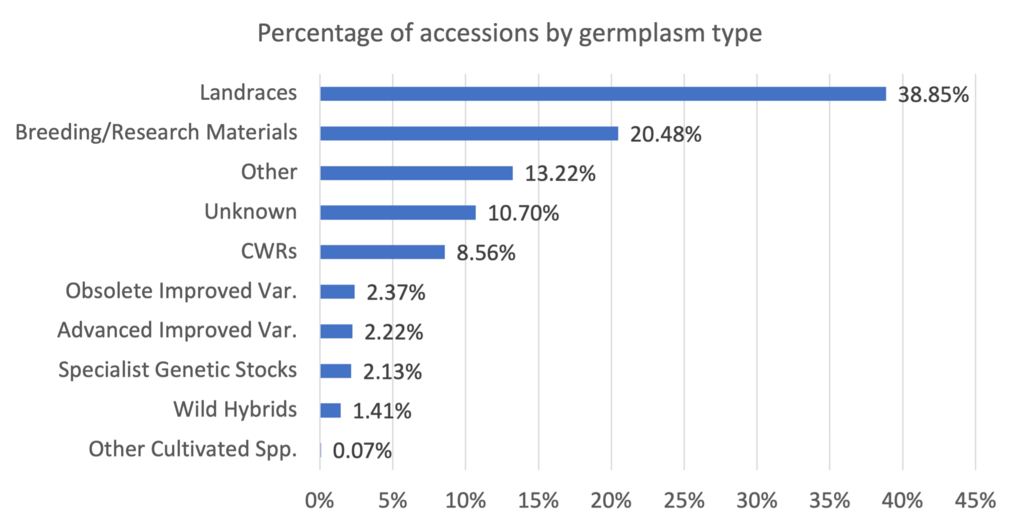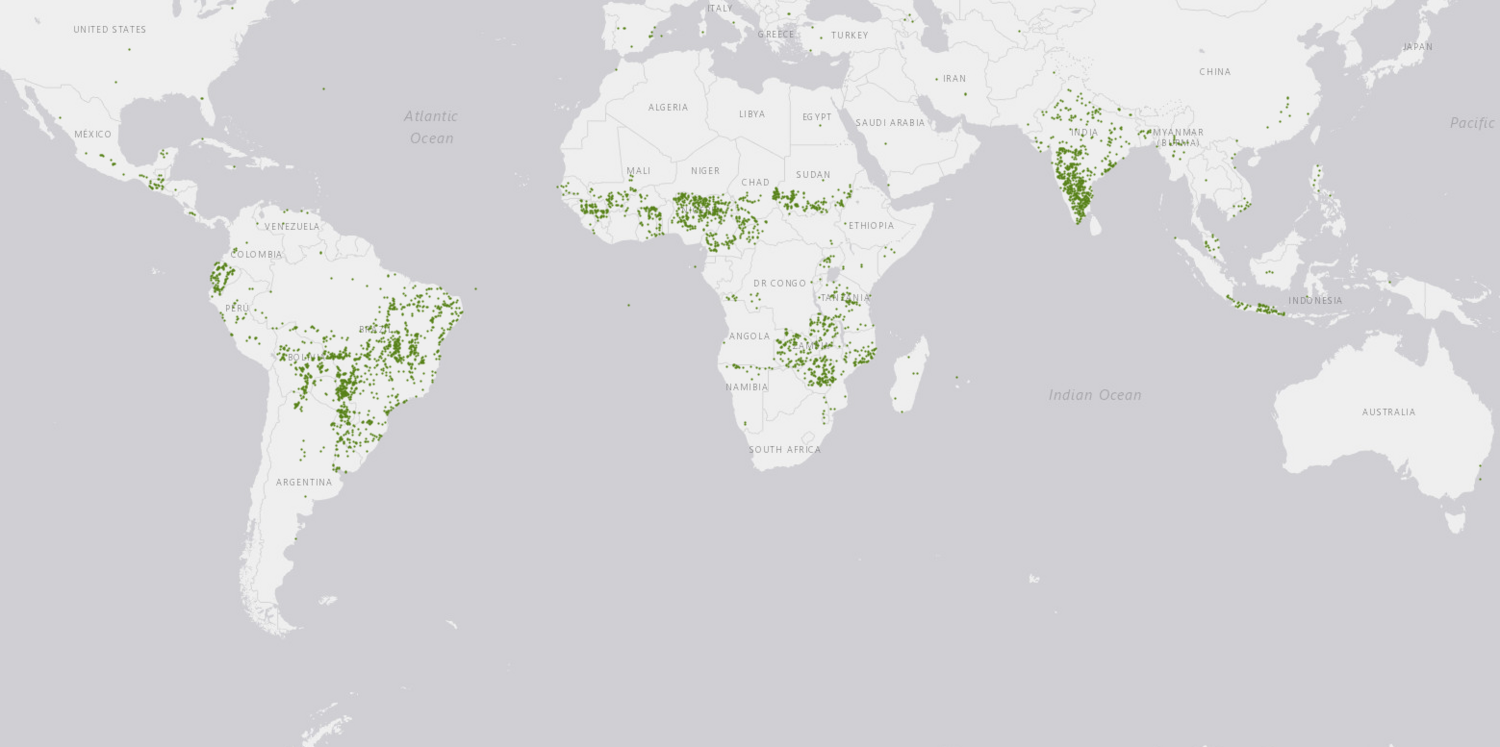Global Strategy for the Conservation and Use of Peanut Genetic Resources
The Global Strategy for the Conservation and Use of Peanut Genetic Resources was published in 2022 (Global Crop Diversity Trust 2022, DOI: 10.5281/zenodo.7545106). This document, developed with the input of a large number of experts, aims to provide a framework for the efficient conservation and effective use of globally important collections of peanut genetic resources. This webpage provides a summary of some of the its key findings and of the recommendations for prority actions.
Size of collections and their locations
Data from WIEWS, Genesys, GRIN-Global databases, and a survey indicated a total of over 90,000 Arachis acessions conserved in genebanks at the global level. The interactive bubble map below shows the combined data retrieved in 2022 from Genesys, WIEWS and GRIN-Global databases.
Key collections
The world’s six largest collections of Arachis germplasm:
- International Crop Research Institute for the Semi-Arid Tropics-ICRISAT (IND002) in India
- Indian Council of Agricultural Research-ICAR (IND001) in India
- US Department of Agriculture-USDA (USA016) in the United States
- Oil Crops Research Institute of the Chinese Academy of Agricultural Sciences-OCRI-CAAS (CHN003) in China
- Texas AgriLife Research Center of Texas A&M University-TAMU (USA520) in the United States
- Empresa Brasileira de Pesquisa Agropecuaria-EMBRAPA (BRA002) in Brazil
Additionally, other important peanut collections are:
- INTA (Instituto Nacional de Tecnología Agropecuaria) – Manfredi, Argentina (ARG1211)
- NCSU (North Carolina State University, Department of Crop and Soil Science) – Raleigh, USA (USA317)
- IBONE (Instituto de Botánica del Nordeste, UNNE-CONICET) – Corrientes, Argentina (ARG1133)
- CIAT (Centro Internacional de Agricultura Tropical) – Cali, Colombia (COL003)
Arachis accessions conserved ex situ by regions where they are stored
The bars show the number of accessions of cultivated and wild Arachis species by regions where they are stored (i.e. the location of the genebanks).
Ex situ holding by biological type
The chart shows the number of Arachis accessions by biological type. For a large proportion of accessions conserved in genebanks the passport data in the open databases do not include information on the biological type of the accessions. The data was retrieved in 2022 from Genesys, WIEWS and GRIN-Global databases.
The chart below shows the percentage of accessions conserved ex situ by biological type (Survey 2020, n = 27).

Information and documentation
The current global system of peanut conservation and use is constrained by the lack of standardized, updated, and readily accessible information about existing genetic resources conserved ex situ.
The chart below shows the percent of surveyed genebanks with electronic accession-level databases.

The Chart below shows the proportion of types of accession-level data stored on surveyed collection databases.

Peanut diversity tree
A diversity tree is a stratification of a genepool into groups and subgroups. The concept originated in a paper published by van Treuren et al. (2009) proposing a way to analyze and plan the composition of genebank collections. The diversity tree visualization is interactive (click on the tree to open it).
Recommendations for priority actions
Ex situ conservation:
- Documentation standards and a common information platform
- Regenerating, characterizing and evaluating “unknown” accessions
- Filling existing taxonomic, genetic and ecogeographic gaps in collections
- Ensuring security - duplication of unique accessions and collections
- Training for peanut curators and technicians in developing countries
- Initiating constructive international policy dialogue on peanut ABS
- Integrating complementary ex situ and in situ conservation approaches
In situ conservation:
- Inventory of peanut landraces and associated knowledge
- Capacity building on in situ conservation methods
- In situ conservation of wild Arachis diversity
- Impact assessment
- Public awareness and enabling policies
Partners and donor
The development of this crop conservation strategy was funded by the German Federal Ministry of Food and Agriculture (BMEL) as part of the three-year project led by the Crop Trust: Breathing New Life into the Global Crop Conservation Strategies: Providing an Evidence Base for the Global System of Ex Situ Conservation of Crop Diversity. The Crop Trust also cooperated with the Secretariat of The International Treaty on Plant Genetic Resources for Food and Agriculture (ITPGRFA) in the development of this document.





